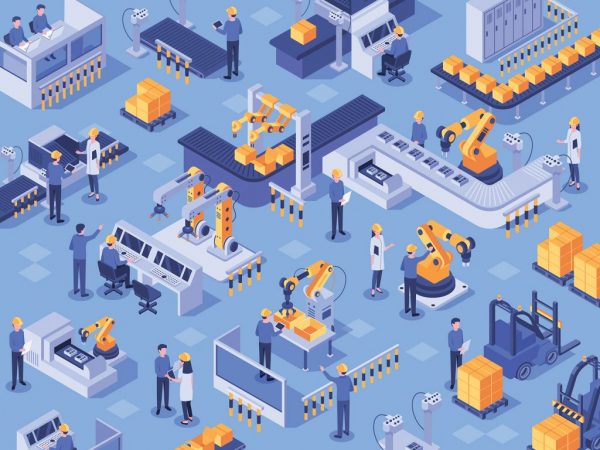
North American mfg. needs the next generation: How to leverage Gen Z for better business outcomes
by Jarred Knecht, President of Promark Electronics
North American manufacturing faces some significant problems, including competition, offshoring, supply chain issues and other economic externalities.

Jarred Knecht, President of Promark Electronics (Credit: Promark Electronics)
Manufacturing is a staple of Canada’s economy. According to KPMG’s 2023 Canadian Manufacturing Outlook survey, manufacturing accounts for around $174 billion, or 10% of Canada’s total GDP. Manufacturers annually export over $354 billion represent 68% of Canada’s merchandise exports and provide more than 1.7 million full-time jobs nationwide. The same survey found that around 72% of manufacturers predict that their company earnings will increase between 2.5% and 9.9% over the next three years. However, even with all this positive headway, there are still some looming threats along the horizon.
North American manufacturing faces some significant problems, including competition, offshoring, supply chain issues and other economic externalities. But a bigger threat to North American manufacturing businesses is right under our noses. We’re facing an image problem.
Baby boomers who have predominantly been running this industry for decades are aging into retirement, and we are now looking to the next generation of manufacturing entrepreneurs to take the reins. Unfortunately, there is the often-correct perception that this sector is lacking in technological innovation—making it increasingly difficult to attract talent and contributing to a vast skills gap.
A labor shortage in manufacturing has persisted for years. You could argue that there is a lack of promotion of manufacturing careers in schools or even blame popular industries like tech or software development for taking all the talent through rising opportunities. Regardless of the cause, this problem will hinder manufacturing’s business growth unless manufacturing leaders take it upon themselves to make the industry more attractive. You cannot ignore what the future workforce wants.
So, what can manufacturers do to attract and empower the next generation of manufacturers?

PHOTO: Manufacturing/Getty Images
Advocate for Industry Advancements
Technology touches all industries. As it continues to evolve, so does the need for a workforce that can adapt to this changing environment. This is more prevalent than ever in manufacturing as it is undergoing a transformation driven by automation technologies like robotics, IoT, advanced data analytics, and AI. We aren’t just assembly lines anymore.
However, with this surge in technology-driven manufacturing jobs, there is a shortage of workers with the current skills needed to maintain these functions. As we’ve seen with the recent AI boom, there is a huge opportunity here for young, eager workers to emerge in these roles. People who are more familiar with techniques like coding, engineering, and STEM are well-suited to navigate and thrive in an environment where these new skills are constantly in demand.
Rather than being fearful of changes brought to the industry by AI and other technologies, manufacturers should position themselves as advocates for a humans-plus-AI paradigm. They should adopt technologies to enhance their processes where possible and ensure that they are offering manufacturing jobs that are also tech jobs to attract a younger workforce.
Strengthen Your Employer Brand
Apple. Microsoft. Meta. The companies that manufacturers are competing against for top talent have strong employer brands. A younger workforce wants to make their career with an employer that is innovative and investing in technology (and in them). One way to communicate this to potential employees is to have a strong internal communications function and strong employer brand.
To do this, it’s important to stay active on social media. As easy as this sounds, it’s even easier to fall behind. Posting multiple times per month on LinkedIn (or even a week if you are feeling proactive) and promoting industry advancements, general company news, product updates, partnerships, awards won, or events your company is attending is a great way to elevate your brand and showcase your company’s culture to the emerging workforce.
Investing in The Younger Generation
It is one thing to hire technologically savvy Gen Z/Millennials. It is another to successfully integrate them into a growing manufacturing company while simultaneously keeping up with normal tasks and deadlines. How are you going to onboard your new team members when the 30-year vet who is training them is out on vacation for a week?
Investing more in training procedures is crucial. Short, interactive training videos and other bite-sized clips are most effective in communicating with today’s younger workers. It’s an effective way to not only create a tailored education program that relates to the younger generation but can benefit your company as a whole by cutting down costs and focusing your resources on other initiatives.
At Promark Electronics, by using a combination of videos, our digital work instruction environment, and an approachable passionate training team, we were able to cut our training process down from 6 weeks to 2 weeks and receive the same level of productivity and quality. This upfront investment of time to create a streamlined training program is paying dividends in showing employees we are invested in them from the beginning.
In addition, offering consistent career development opportunities can provide clear paths for growth and skill development. Having a clear and concise path for advancement shows your younger workforce that it is possible to elevate their career within the organization.
Capturing the attention of younger generations is not only about appealing to a specific demographic but also about staying with the times, building a positive brand image, and positioning the company for long-term success in a constantly evolving market. However, empowering the next generation does not mean pushing out the old and bringing in the new. The most valuable tool the younger generation has in their arsenal is the knowledge and guidance of the experienced workforce.